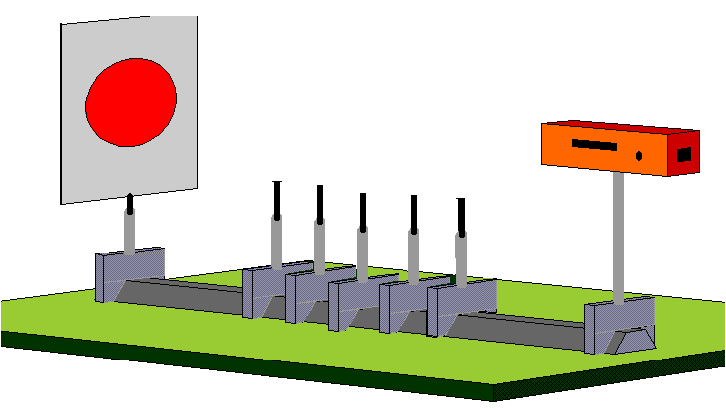 Creating
and detecting single photons
Creating
and detecting single photons Creating
and detecting single photons
Creating
and detecting single photons
Each grey filter diminishes the light until finally the intensity is
so small that the light cannot be seen anymore. You will not see single
photons. However, it is not that our eyes are so insensitive. The visual
nervous system is responsible for our inability to see single photons.
It has been demonstrated that light-sensitive cells in our eye (rod cells)
are able to detect single photons. The wiring of the nerves that lead from
the retina to the brain makes it necessary that about 9 photons have to
be detected within 100 ms in order to transmit a signal to the brain.
Image of a real CCD chip
The problem is therefore the detection of the photons. Fortunately, devices have been invented which are indeed able detect single photons. An example is the CCD chip which is also used in video cameras. A CCD chip is an arrangement of semiconductor elements in a plane. Each of the semiconductor elements can detect photons. The position where a photon is detected is electronically stored so that the spatial distribution of the detected photons can be made visible.
Image: how does a CCD picture look like